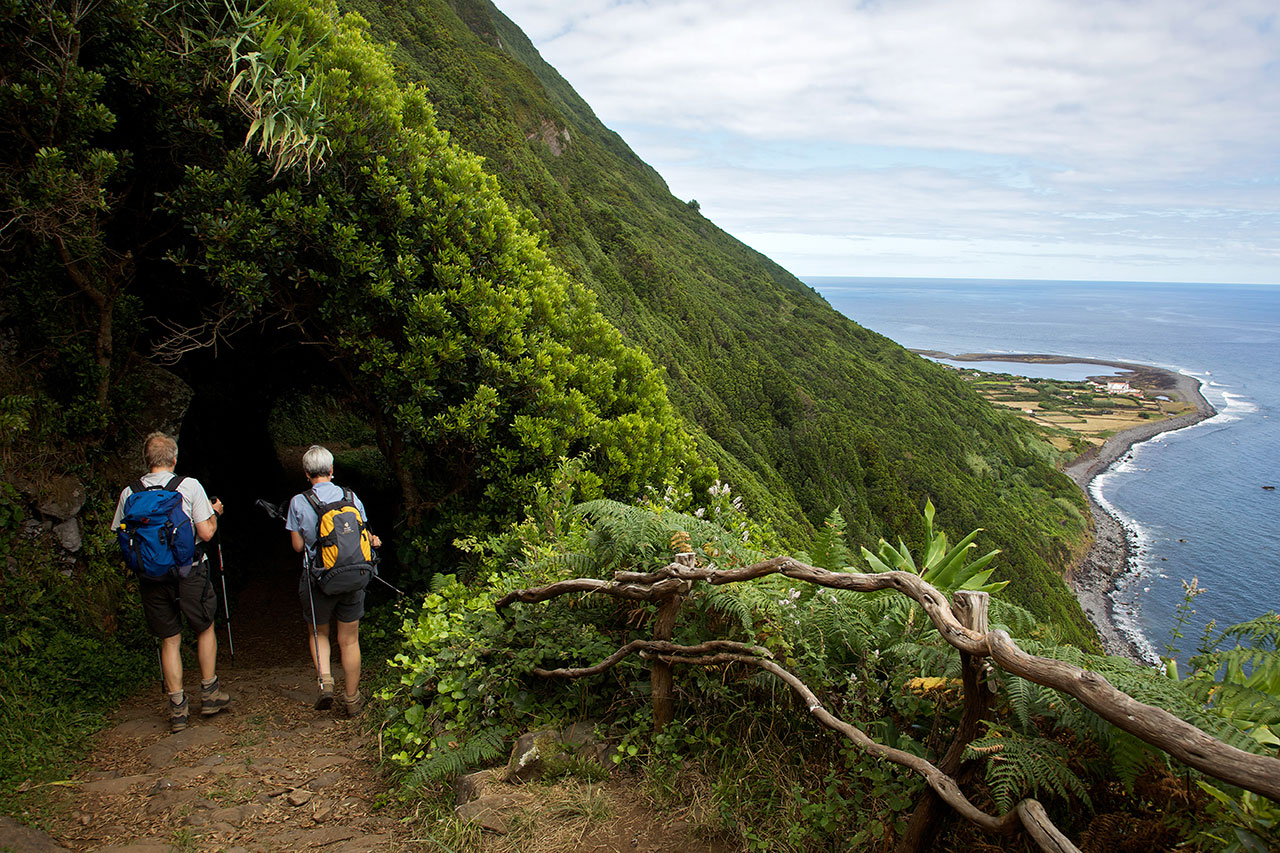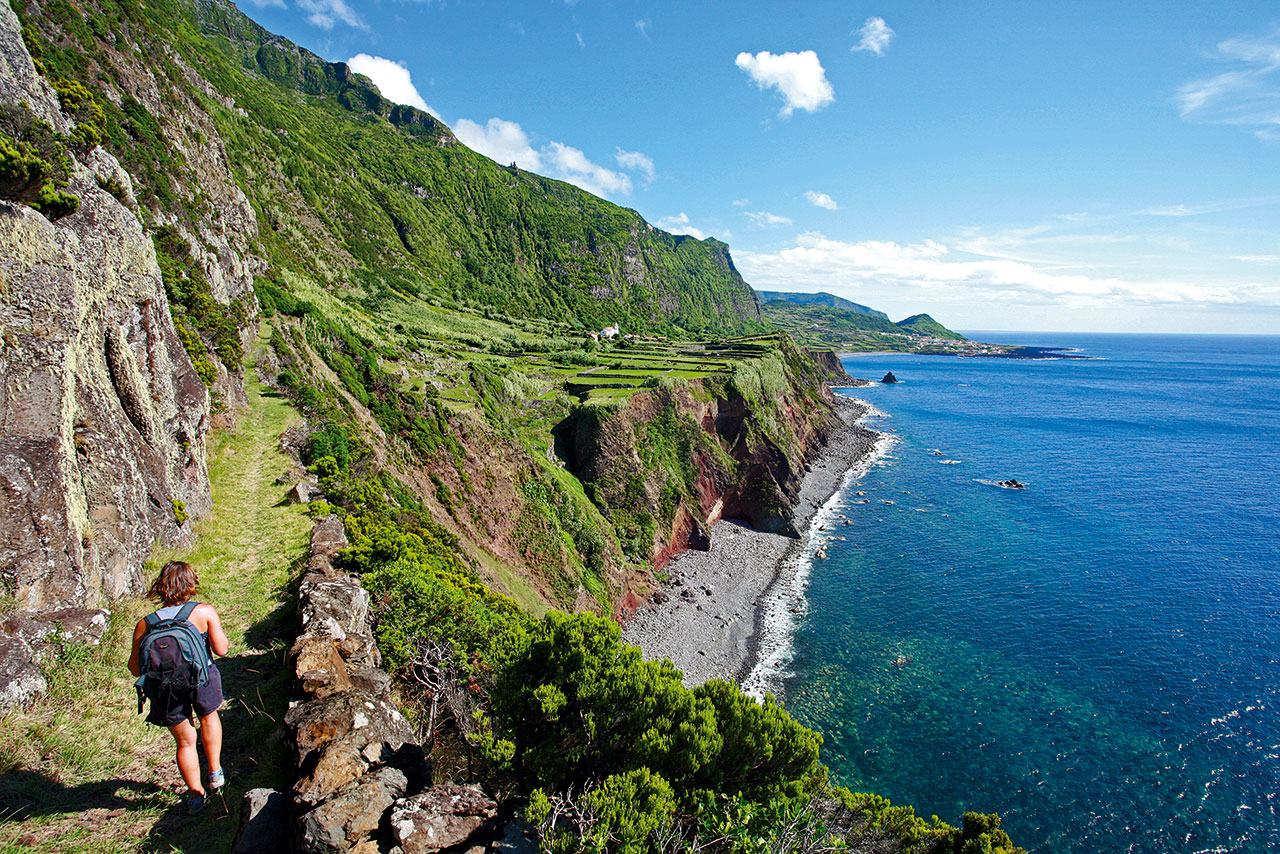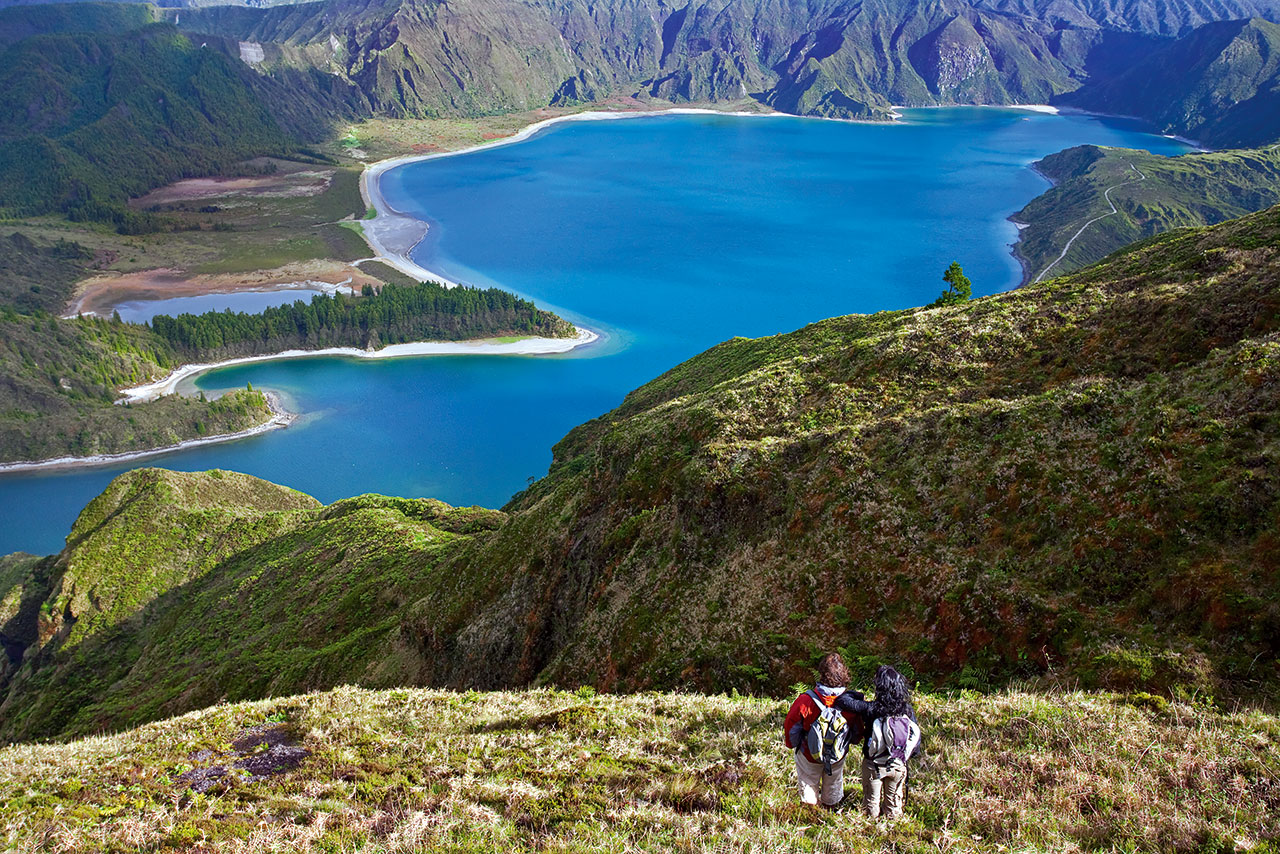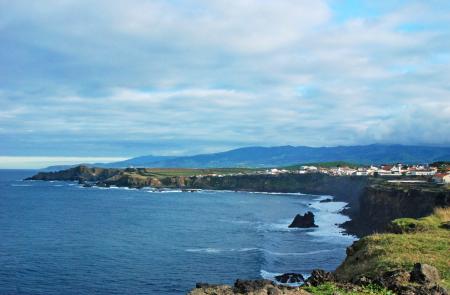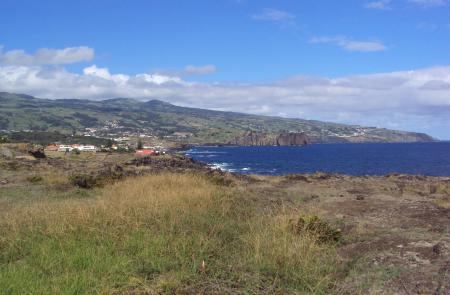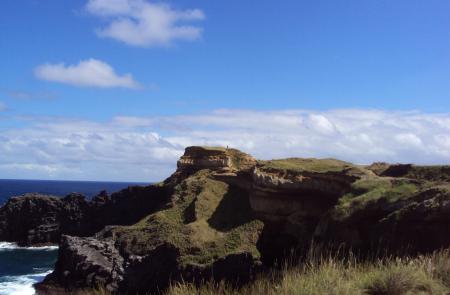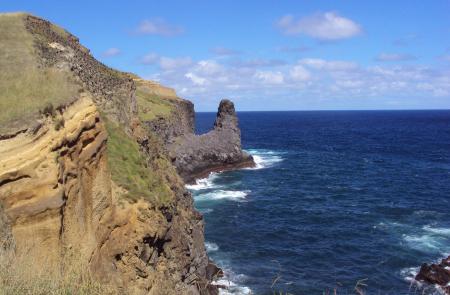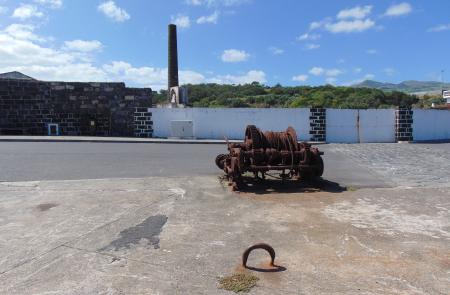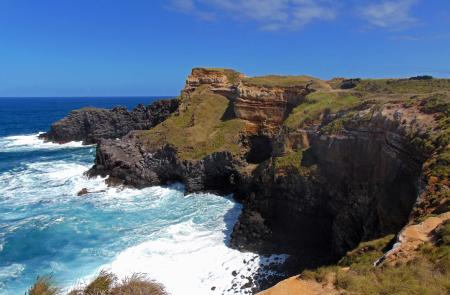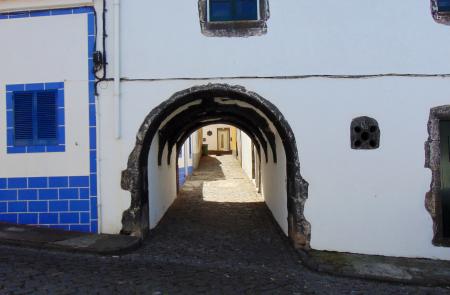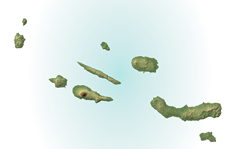Vigia de São Pedro - São Miguel PR01SMI
Trail Info
This linear route connects the village of São Vicente Ferreira to Calhetas, along the North shoreline of the island.
Begin the trail near Poços of São Vicente, a bathing area near the fishing port, the most important one on the island, during the whaling period. On the other side of the road it is possible to see the ruins of the ancient local whale factory and, on the same direction of the trail, the cutting north coast of the island with Pontas of São Pedro, Cintrão and Fenais da Ajuda on the horizon.
Follow the marks along the road until you reach a small parking place, go round the houses and continue near the sea, by a dirt road that ends up on a residential area. Follow until the main road that leads to the village of Fenais da Luz. Arriving to the church of Nossa Semhora da Luz, turn left towards the coast. Here there is a small detour on the left-hand side, to a viewpoint with a view over the North coast of the island.
Leave the viewpoint and continue by a street with traditional houses from the 17th and 18th centuries until a dirt road with several accesses to the shoreline. Along the trail you will pass several points of interest such as Ponta of São Pedro, the chapel of São Pedro (16th c.) and, further ahead, the hole of São Pedro, an interesting geological formation. Here we advise caution due to the danger of falling.
Continue the trail along the coast, passing by a last beachfront access, until reaching Calhetas. The walk ends near the church of Nossa Senhora da Boa Viagem, built in 1728.
Additional Information
- Postal code: 9545-100
- Location: São Vicente Ferreira
- Address: Rua do Sertão
- Parish: São Vicente Ferreira
- Municipality: Ponta Delgada
- Coordinates: 37.83451, -25.670294
